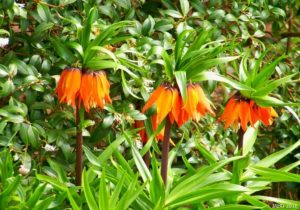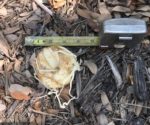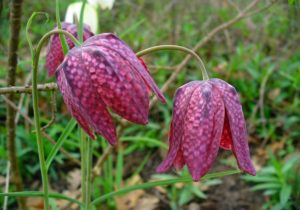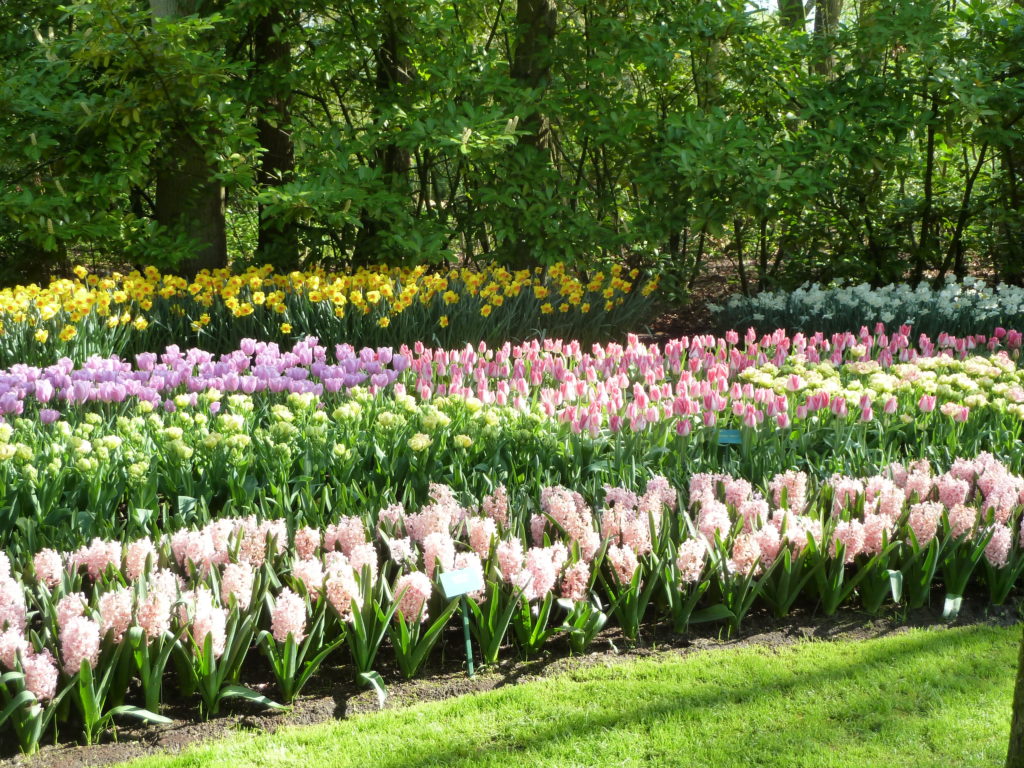Floral Treasures for Spring

Crown Imperial blooms can reach nearly 4 feet in height.
Looking for a pop of color or a unique bloom to boost your spring show? Bulbs may just be your answer! In the Austin area we have many bulb varieties that naturalize and bloom each year. However, our warmer winters are not kind to those bulbs requiring ‘chill hours’. ‘Chill hours’ are the minimum amount of time bulbs must stay below temperatures of 40F.
But if you don’t mind a ‘one and done’ annual show, then your options are endless. Most bulbs, such as tulips (Tulipa gesneriana), come from Holland and arrive pre-chilled and ready to plant. Follow the planting instructions and wait for the spring blooms. After the floral show you can either lift and throw away or just leave in the ground to die. Essentially, you are treating these bulbs like annual flowers.
Unique Crown Imperials

Unique pineapple-looking bloom.
I’m always on the hunt for unique spring bloom that wildlife won’t disturb and can tolerate some shade. I’ve found Crown Imperials (Fritillaria imperialis) to fit the bill. Red crown Imperial (Fritillaria rubra) and yellow crown imperial (Fritillaria lutea) are deer resistant and bloom in mid-spring with highly unique downward facing flowers. The flowering stalks can reach 36-40” in height and are great for cutting and bringing inside. The flowers are fragrant and can be the highlight in a floral arrangement. The musky and herbal smell of the foliage makes them wildlife resistant.
Plant at an Angle

The fleshy bulbs have a center stem hole.
Crown Imperials are recommended for planting zones 5-8. The location I chose has morning sun and afternoon shade since our Austin-area springs can warm up quickly. To plant, grab a pair of gloves, a hand spade, a measuring tape, and a watering can. Handle these fleshy bulbs with gloves to avoid a lingering odor on your hands. These are larger bulbs, about 3-inches in diameter, requiring a planting depth of 6-8 inches to support their tall flower stalks.

Plant 6-8 inches deep to support tall stems
Recognizing many might have limestone rock beneath the soil, be sure your location has sufficient depth by measuring your hole. Once you have the desired depth, plant the bulb at a 45-degree angle to avoid water from being caught in the center (or stem hole) of the bulb and possibly causing bulb rot. Replace the soil and water well to activate the bulb to begin its growth cycle. Add a little mulch to help preserve the moisture over the fall/winter months.
Impressive Show

Purple blooms of Snake’s Head Fritillary are show-stoppers.
These impressive plants are accompanied by whorls of lance-shaped foliage around the lower ½ of the stem and the added foliage above the flower gives a pineapple effect. The bulbs can spread 1-1.5 feet across, so you don’t need too many of these to enjoy a unique display next spring. Or, if you prefer a smaller version, try the Snake’s Head Fritillary (Fritillaria meleagris) which only grow up to 12 inches in height. Plant these in large groupings for the full effect of their purple spotted blooms. Although these bulbs also have an odor to deter wildlife, the smaller bulb does not have the potent smell of its larger cousin. In fact, I had to replant two of the twelve bulbs I originally planted due to curious squirrels. Since their first encounter, however, they have left them alone. Now I just wait until spring to enjoy the unique blooms.
Tulip Show Extraordinaire
If tulips are your passion, go right ahead and order a few and enjoy the one-time show in your garden. Need ideas? The largest tulip show in the Netherlands is the Keukenhof gardens outside of Amsterdam. Every March through May the gardens highlight over 7 million bulbs in various displays cultivated by local artists and growers. I had the pleasure to see the gardens a few years ago on a leisure trip, and even my husband said it was one of the best excursions we’ve ever taken – and he’s not a ‘flower person’ but tolerates my passion.

Keukenhoff bulb display.
Storing Bulbs
If you prefer to re-use your bulbs that require chilling hours, allow the foliage to wilt and die. The dying foliage provides nutrients to the bulb for next year’s blooms. Once the foliage is brown, the bulb is ready to be lifted. Remove all soil from the bulb and spread in a shady dry place, such as a garage, to allow the bulb to completely dry. This may take a week. Then store the bulbs in a cool dry place (60-65F) with good air circulation, such as a cardboard box with holes, or hanging in a nylon hose. If storing in a box or container, you can layer the bulbs, however, do not create more than 3 layers to allow for proper air circulation.
Prepping for Next Year
The bulbs that require a dormancy period must be tricked into thinking they’ve experienced the dormant period by placing them in a refrigerator for 4-6 weeks. Check the requirements for the individual bulb type for exact timing. One word of caution – avoid storing fruit in the refrigerator along with the bulbs, as ripening fruit releases ethylene gas which inhibits bulb flowering. With a little TLC, your bulbs will be ready for planting and willing and able to produce the bloom show all over again each spring. Just remember to trick dormancy in enough time prior to the planting season.
Additional Resources

Yvonne was a 35+year veteran in the computer and information technology industry when she retired and moved from Houston to the Austin area. In 2018, Yvonne certified as a Travis County Texas Master Gardener to follow her passion for gardening and volunteering within the community. She has spent 20+ years enjoying gardening and working with bulbs and perennials. She now tackles the challenges presented by the Austin area wildlife, drought, and limestone soil.

